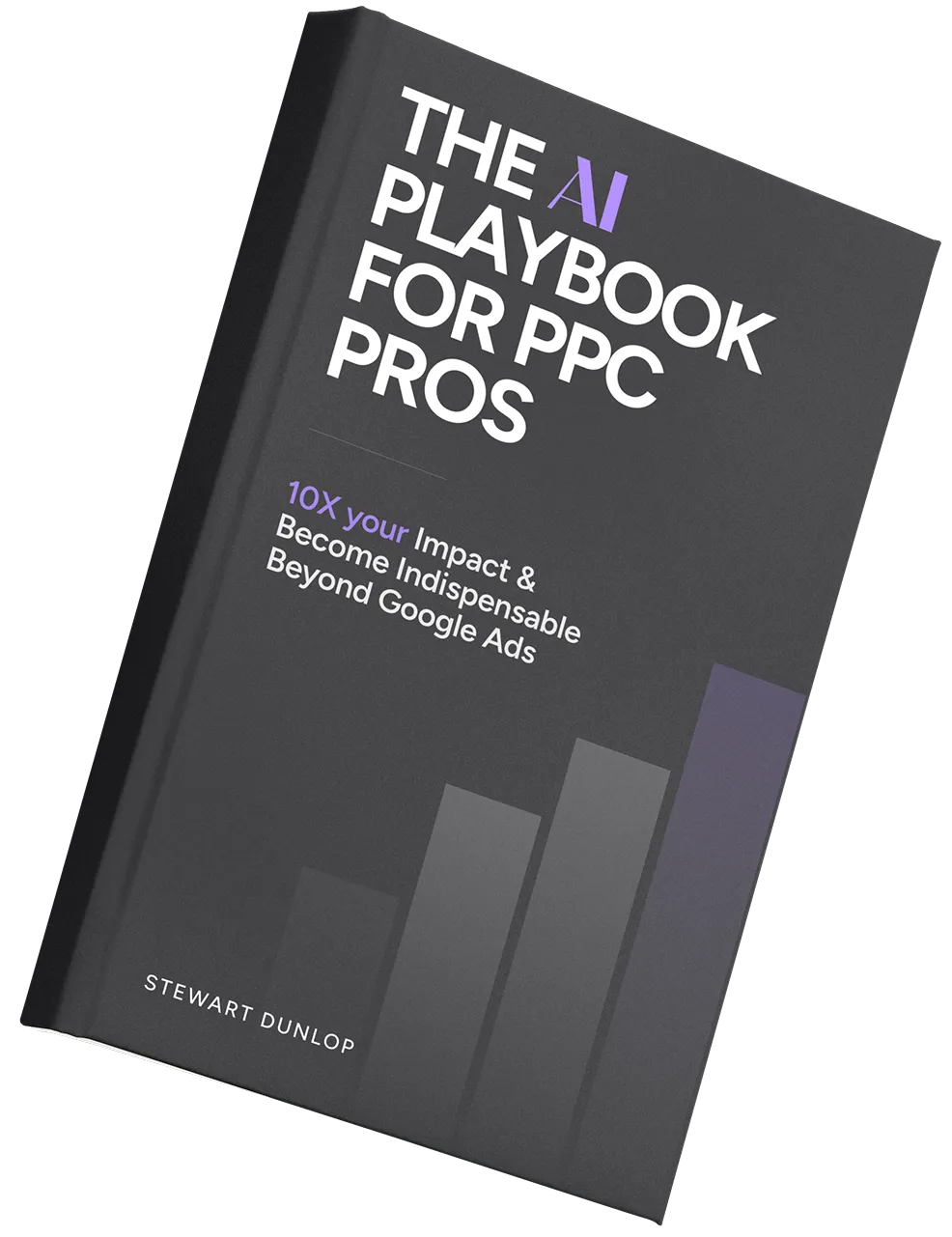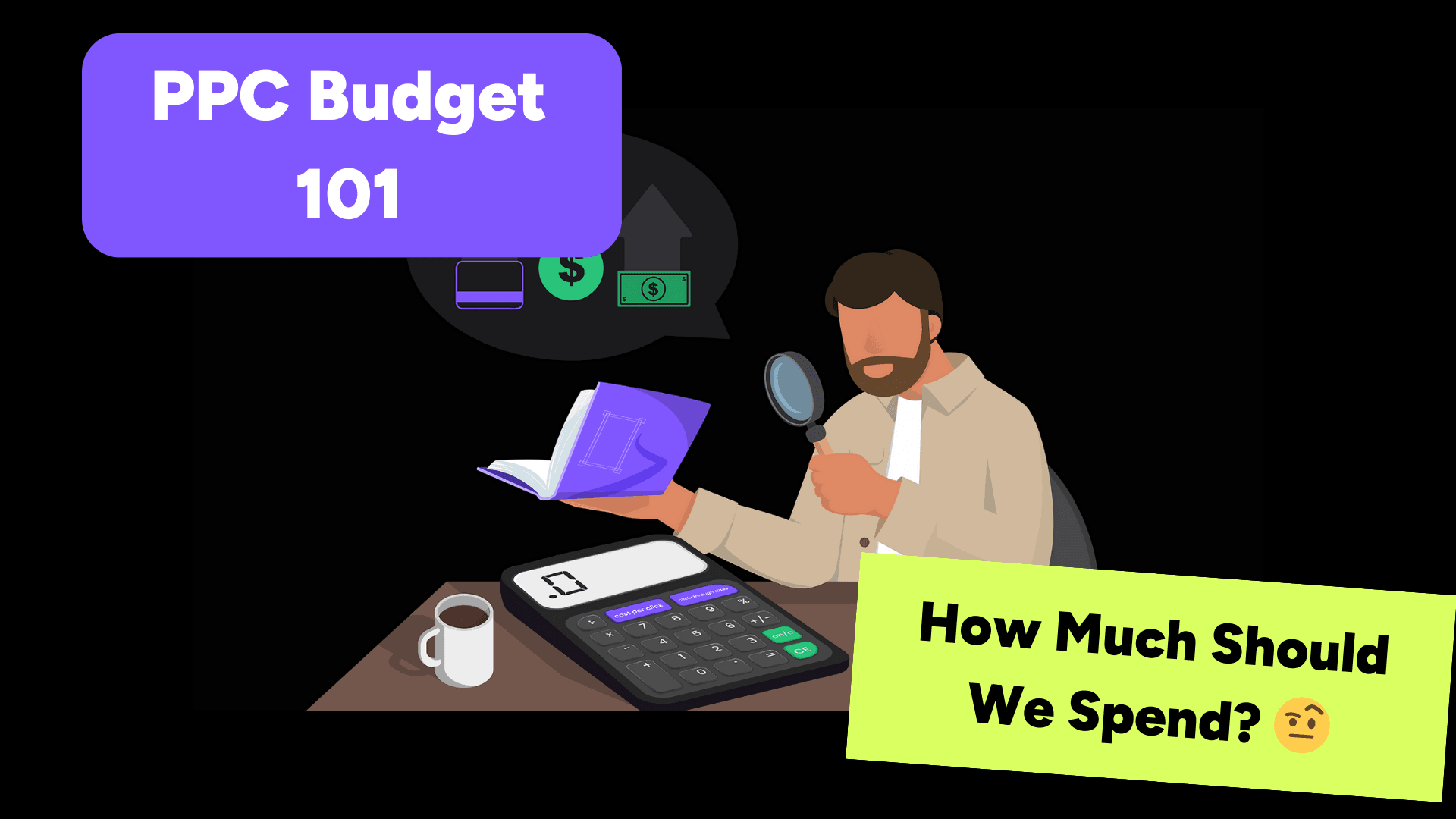
If you're a marketing professional working in-house or on behalf of a client, then you need to have some very good evidence to suggest a reasonable PPC budget.
👉 We're going to show you the step by step process to coming up with the perfect budget every single time.
Stick around to the end to get access to our free PPC Budgets Forecast template.
PPC Budgeting - Quick Numbers
- $1,000 minimum monthly budget is recommended for PPC advertising.
- Local businesses may need a lower budget overall e.g. $1,000-3,000 per month.
- Larger or National businesses will need significantly higher budget, usually $10,000+ per month.
- 57.6% of businesses budget between $1,000 - $11,000 per month on PPC ads.
- Google Ads Cost $3.67 per click on average across all industries.
How Do PPC Budgets Work?
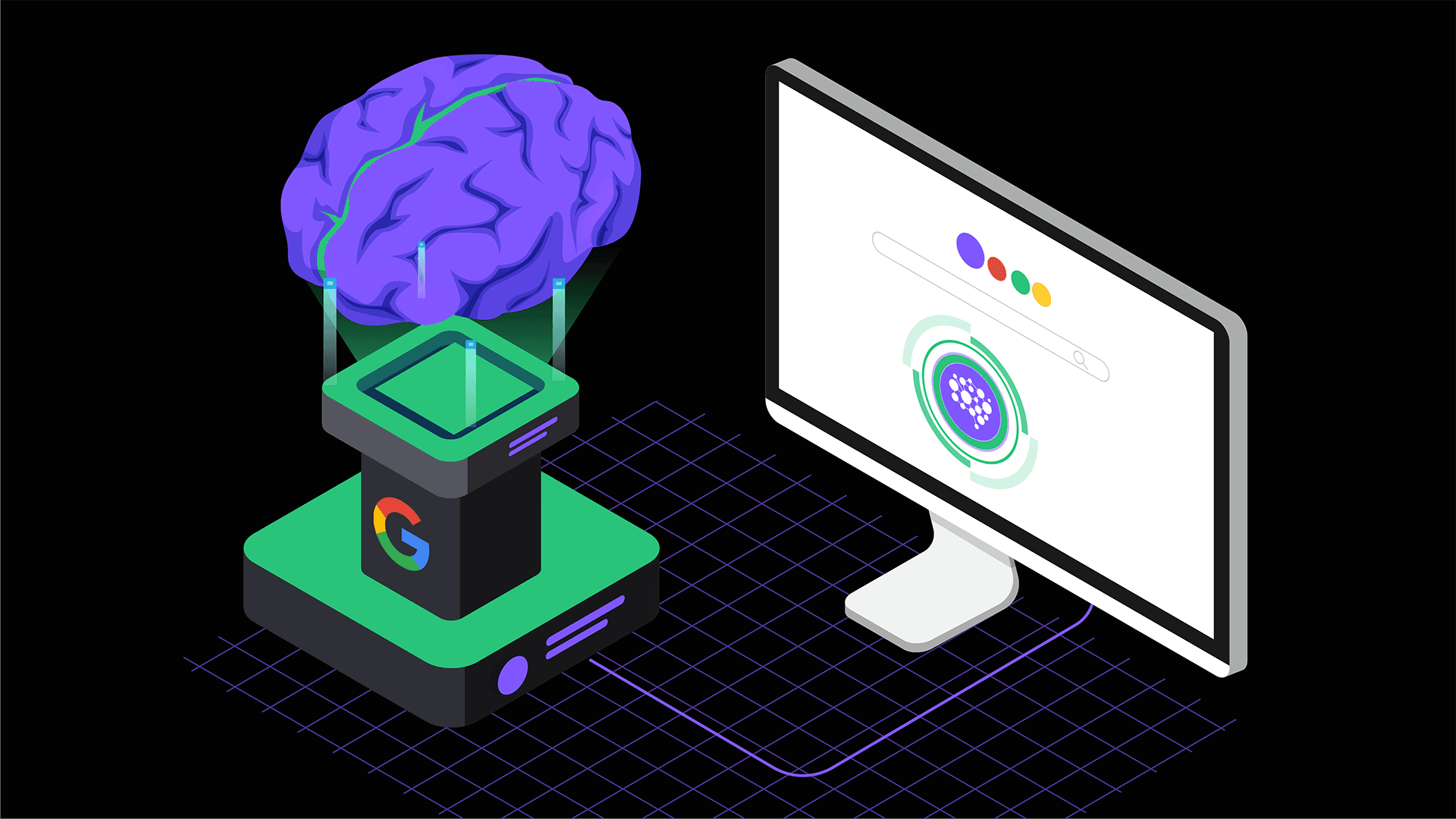
Google ads uses a daily budget system for PPC advertising.
That means you'll set an average daily budget and Google will optimize your campaign to spend more on days when you're more likely to get conversions.
So if your daily average budget is $20, you might spend $10 on a Sunday but $30 on a Monday.
The key point is that over the course of 1 month, your spend will average out.
Here's a graphic to show how that works...

It's important to note that by default, your PPC budget is set at the campaign level within Google ads.
This means that by default you'll have to set an individual daily budget for each and every campaign you create within Google ads.
Shared Budgets
Shared budgets allow you to pool your budget across multiple campaigns, letting Google Ads automatically allocate funds to the campaigns with the most potential for conversions.
That might sound like the perfect solution.
It's true that the temptation is huge to let Google just automatically distribute budgets accordingly with its machine learning powers, but there are some very clear and obvious drawbacks which means that most PPC marketers do not utilize shared budgets, except in very simple accounts.
Downsides to Shared Budgets in Google Ads
- Loss of Control: This is the biggest drawback. With a shared budget, Google Ads allocates funds based on performance, which can be great, but it means you can never dictate exactly how much each campaign spends. A high-performing campaign might eat up most of the budget, leaving other essential discovery campaigns starved.
- Hard To Assess Performance: Since budgets aren't fixed for each campaign, it can be difficult to analayze individual campaign performance. You might see a great conversion rate, but it's hard to tell if it's due to a strong campaign or simply because it got most of the budget that day.
- Limited Delivery Settings: Shared budgets restrict your ability to set unique delivery settings and different bidding strategies for each campaign. This is a problem if you have for example a brand awareness campaign running vs. a target CPA campaign. Essentially, Google's machine learning gets very confused.
💡 Here's a scenario to consider:
Imagine you have two campaigns:
- Campaign A targets a broad audience with high volume and low conversion rates - It's a discovery campaign.
- Campaign B targets a niche audience with lower volume but higher conversion rates - It's a high performance campaign.
In a shared budget, Campaign A might dominate spending due to its high volume, even though Campaign B might be driving more valuable conversions.
Again, this boils down to a lack of control.
How to Set Your PPC Budget

👉 Now we're going to through the step by step process to figuring out exactly what the optimal PPC budget is for your business.
This won't take long, but if you follow each step correctly you'll have a perfect budget in place that no manager can question!
Step 1) Set Your Goals
Before we set a budget, we must absolutely consider our goals and KPIs.
What is the ultimate goal that we want to achieve from spending our PPC budget?
Example goals:
- Deliver 100 additional phone leads per month for our plumbing business
- Increase revenue by 10% year on year for our legal firm
- Schedule 20 more demos per month for our SaaS tool
We should consider what a good cost per acquisition (CPA) or return on ad spend (ROAS) would be from our advertising budget.
Let’s say we want to acquire a new customer for $100, and we want to get 10 additional customers per month.
In that case, it’s very easy to calculate that our PPC budget should be at least $1,000 to meet the goal in our given example.
What’s a Good Cost to Acquire a Customer?
I always think this is a great thought exercise for setting a PPC budget.
For example, if you’re an Ecommerce brand selling $20 products with a $10 margin, then you really can’t afford to spend more than maybe $5 to acquire a new customer. And that will say a lot about what budgets you can spend on marketing.
📈 But if you’re a law firm and your average profit for a new customer is $10,000, then I’m confident that you’ll be willing to pay at the very least $1,000 to attract a new customer from your PPC spend.
Step 2) Cost For Your Keywords
Your PPC budget will be massively influenced by the keywords you’re bidding on.
For example, some of the most expensive keywords in the World are in the legal space.
- The keyword "Motorcycle accident attorney" costs $45 per click.
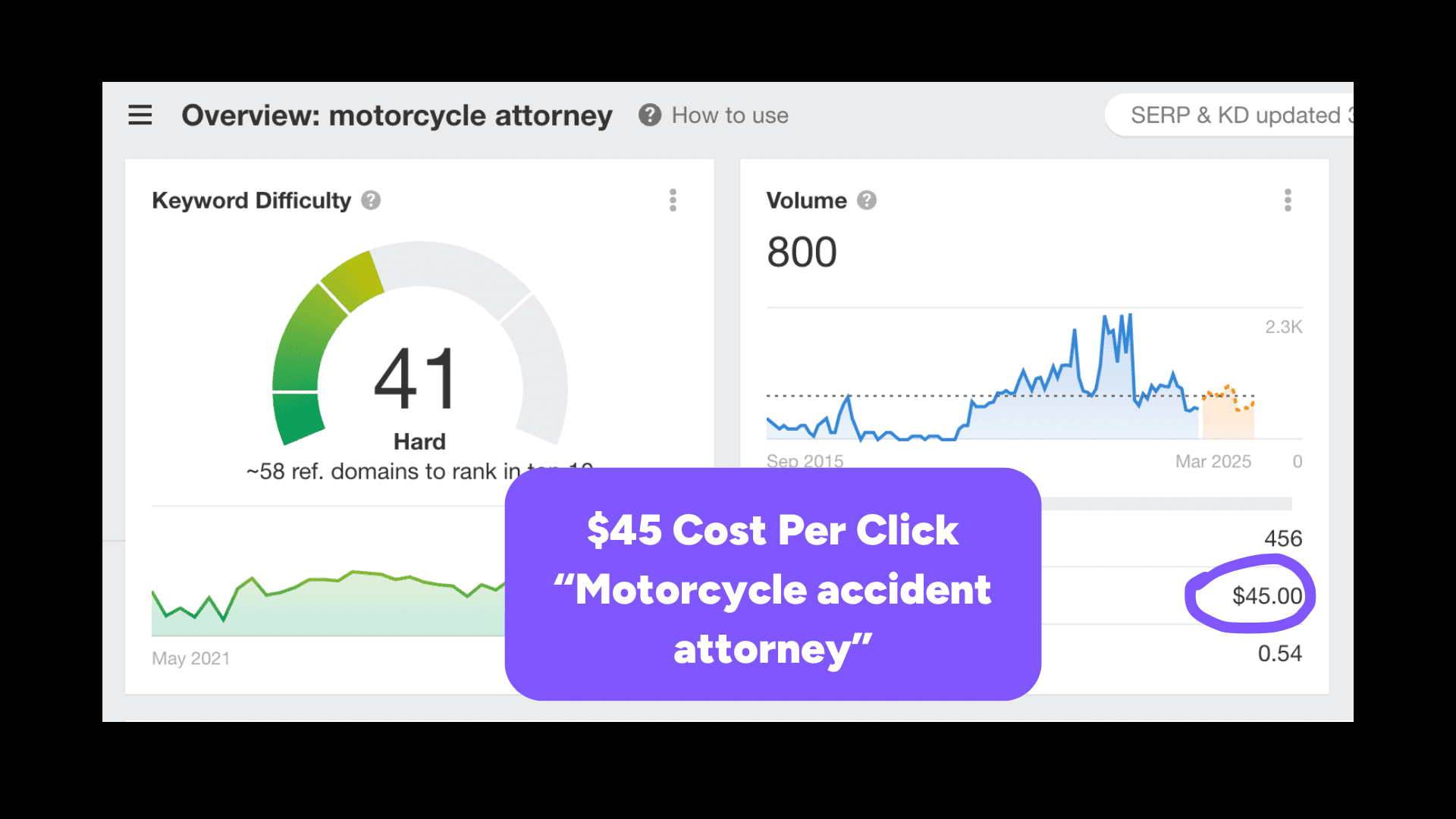
Whereas for a local business like a car garage, it's going to be much cheaper.
- They keyword "Car repair near me" costs $2.50 per click.
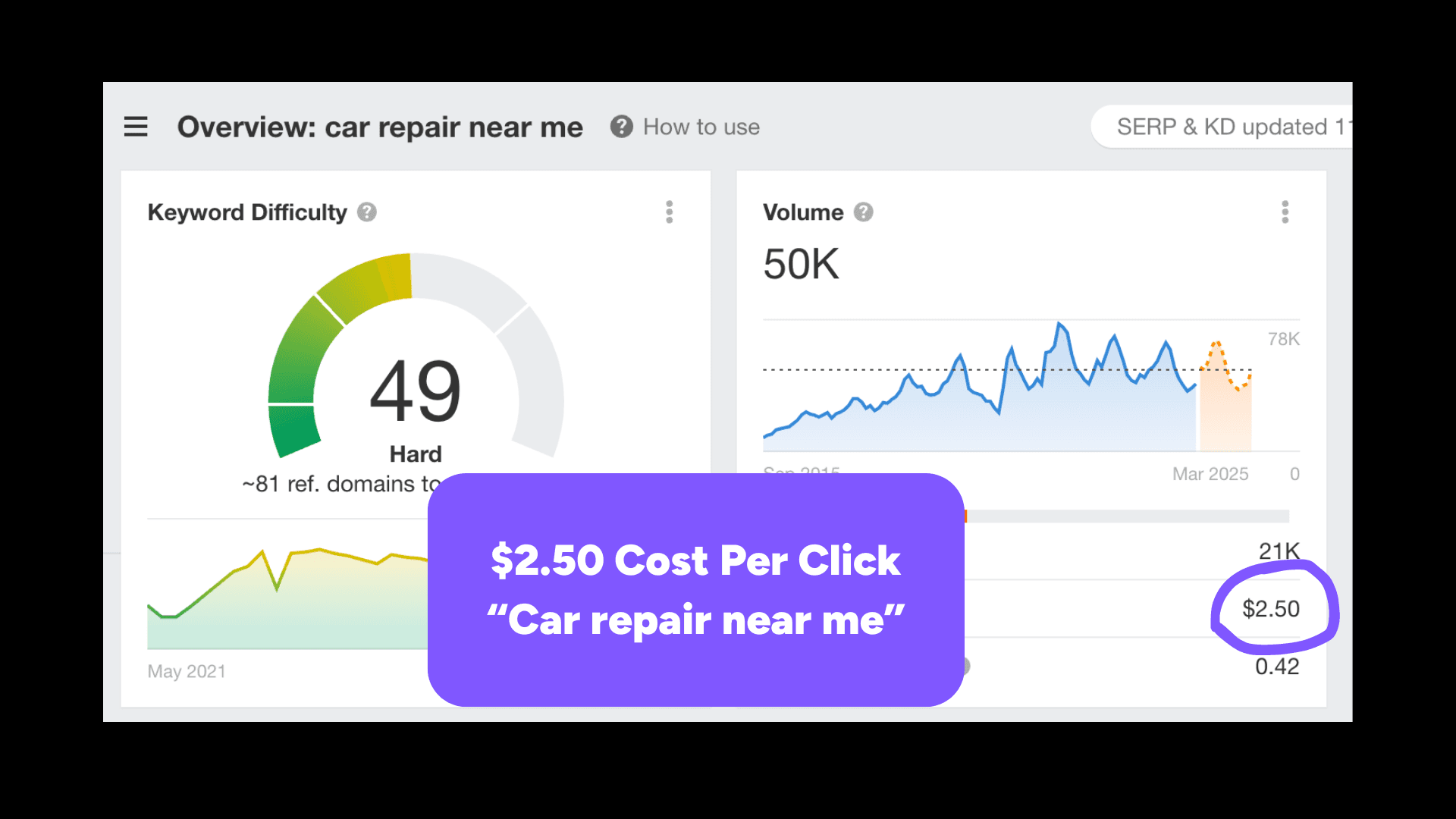
Step 3) Estimate Conversion Rate
Now that you know an estimated cost per click, you can now calculate how much it will cost you to gain a conversion.
But first, you'll need to calculate your conversion rate.
This could range anywhere from:
- 2.5% for an online jewelry store
- 10% for legal services
If you don't know your conversion rate, see our PPC conversion rate by industry guide.
Step 4) Calculate PPC Budget
Once you have calculated your target number of conversions, average cost per click and conversion rate, it's now easy to calculate our PPC budget.
- Calculate required clicks to land a conversion (Divide your target number of conversions by your conversion rate)
- Multiply that number by your average CPC
- = Monthly PPC Budget
That's it! So easy.
Step 5) Budget Campaign Allocation
Now that you have your monthly PPC budget, there's one final step we must take.
And that's to allocate our budget into different campaign types.
E.G.
- High Performance Campaigns
- Discovery / Broad match Campaigns
- Branded Campaigns
- Competitor Campaigns.
Importance of allocating budget 💡
Here's why it's so important to allocate budget to various different campaigns:
- Reach Different Stages of the Buyer's Journey: People are at various stages in their buying process. Some people might have just started researching your product category (awareness stage), while others are looking to buy a product right away (decision stage). So we need different campaigns that cater to each different stage to cover our bases.
- Reach a Larger Audience: You cannot just create campaigns only to drive sales. If we don't run campaigns to generate brand awareness, then it's very hard to get people acquainted with our brand in the first place, except for the small % of those already willing to buy. By allocating budget, we build that funnel where people eventually become converting customers.
- Gathering Data: There's absolutely no way we can know what types of campaigns perform the best unless we test them! PPC is all about gathering large amounts of data, and letting that dictate our strategy.
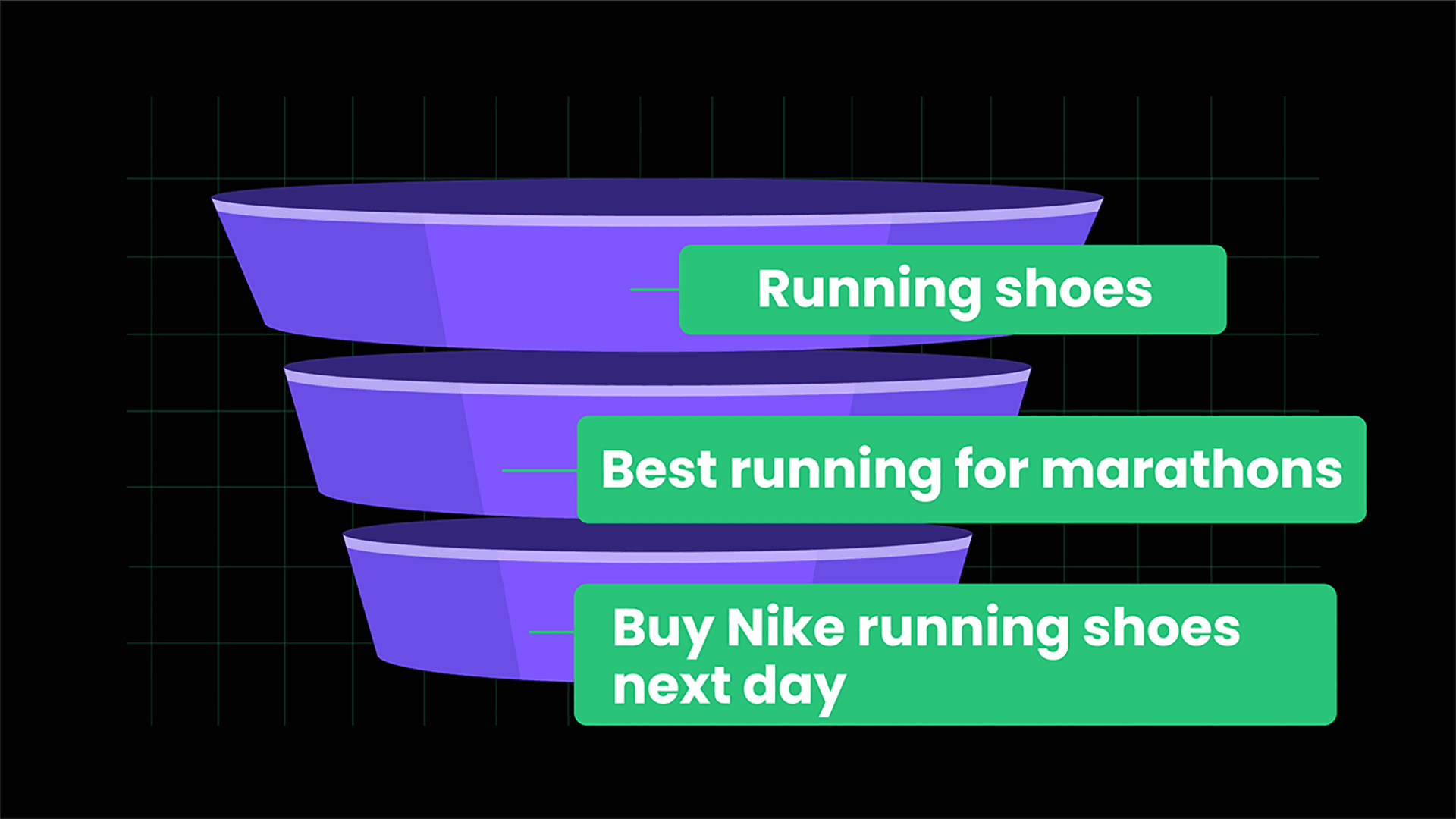
👉 If you're just starting out with a low budget (less than $2,000/month) then it's OK to allocate 100% of your budget into a single high-performance campaign.
However if you're investing a significant sum into Google ads you'll want to consider your budget allocation carefully.
Budget Allocation Examples 📊
Generally speaking it’s impossible to give a blanket PPC budget allocation to every business.
As mentioned, a new business with a low spend can get away with allocating 100% of their budget to a single campaign which includes reliable, top-performing keywords.
✅ Our Standard Protocol
However, If we absolutely had to allocate a beginner PPC budget accordingly, we would probably use something like this:
- 50% spend goes to tried & tested top performing keywords
- 25% spend goes to discovery e.g. broad match.
- 10% goes to remarketing campaigns - search, display etc.
- 10% goes to branded keywords - Note that if you have a high spend on brand keywords, you should use a PPC brand monitoring tool.
- 5% spend goes to competitor keywords
That’s a very simple budget allocation which gives your high-performance keywords a primary focus, whilst also giving you a very generous budget towards discovery.
If we were being incredibly prudent, we could lessen the discovery (top of funnel) budget, but understand that without discovery campaigns (like broad-match) to help generate new demand, we are missing out on a potentially huge swathe of new customers who don’t yet know we exist.
Budget Allocation for Business Loans Company 🏦
Here is a budget allocation broken down according to the paid search funnel:
- Top of Funnel (Awareness/Discovery) - 29% ($29,000/month)
- Broad match and phrase match keywords related to business loans in general.
- e.g., “how to finance a business” - this is very broad and likely represents someone in the early stages of research.
- e.g., “business loans small business" - still broad, but slightly more targeted.
- 💡 Expect these campaigns to have a lower ROAS. Breakeven is acceptable here as the goal is to increase awareness.
- Middle of Funnel (High Performance/Bottom of Funnel) - 65% ($65,000/month)
- Remarketing to people who have already visited your site or interacted with your content.
- Exact match & phrase match keywords that indicate strong buying or application intent.
- e.g., “apply for small business loan online.”
- e.g., “fast business loans for immediate needs.”
- 💡 Expect these campaigns to have a higher ROAS. A return of 2-3 times the investment would be considered solid.
- Bottom of Funnel (Competitor) - 5% ($5,000/month)
- Keywords targeting users looking for your competitors.
- Exact match & phrase match keywords that are closely associated with competing loan services.
- e.g., “[Competitor’s name] business loan alternatives.”
- 💡 Moderate ROAS expected. The goal here is to capture interest from competitors’ customers.
- Bottom of Funnel (Brand) - 1% ($1,000/month)
- Branded keywords.
- Exact match + phrase match focused on your brand.
- Include core brand keywords, brand + service type, and brand + specific loan features.
- 💡 Expect the highest ROAS in this category. Customers searching for your brand are closer to making a decision, potentially looking at 7X ROAS or higher.
Budget Allocation for Fitness Supplements Company 💊
This one is slightly more complex and involves a few different brackets for an Ecommerce company...
- Top of Funnel (Discovery) - 20% ($20,000/month)
- Broad match and phrase match keywords related to fitness supplements.
- e.g., “what supplements help with energy” - this is very broad!
- e.g., “best supplements for workout recovery” - targets those researching specific products.
- 💡 Expect lower ROAS in this segment. The aim here is to expand market reach and introduce your brand.
- Middle of Funnel (High Performance Best Sellers) - 20% ($15,000/month)
- Specific campaigns aimed at promoting your best-selling products.
- Use data from past sales to target products with high conversion rates.
- e.g., “top-rated pre-workout drinks.”
- e.g., “best energy supplements for athletes.”
- Whatever your top selling products are!
- 💡 High ROAS expected. These are your proven products.
- Bottom of Funnel (High Performance) - 45% ($40,000/month)
- Targeted remarketing campaigns.
- Exact match & phrase match keywords that signal a customer is ready to buy.
- e.g., “buy pre-workout supplements online.”
- e.g., “energy supplements next day delivery.”
- 💡 Anticipate a good ROAS. Investments here should yield solid returns as they're ready to purchase.
- Bottom of Funnel (Competitor) - 5% ($5,000/month)
- Keywords focused on users searching for your competitors products.
- e.g., “[Competitor’s name] supplement alternatives.”
- 💡 Moderate ROAS. The goal is to convert people searching for your competitors.
- Bottom of Funnel (Brand) - 10% ($10,000/month)
- Branded keywords.
- Focus on your brand, specific products, and product categories.
- e.g., “[Your Brand] pre-workout drinks.”
- e.g., “[Your Brand] energy bars for athletes.”
- 💡 Highest ROAS expected. Customers searching for your brand are usually ready to purchase! Higher returns here.
9 Golden Rules for PPC Budgeting
Here are some additional rules we put in place in our PPC agency to ensure that we take care of our client’s budgets correctly.
- Business goals should always decide your PPC Budget.
- Never use ROAS or Target CPA strategies on limited budget campaigns (use maximize conversions instead)
- When using automated bidding strategies, DO NOT set your daily budget too high (e.g. 2-3X your daily spend) because certain smart bidding strategies like maximize conversions will lead to paying very high amounts for conversions.
- Agree what success looks like - Pick your KPIs and stick with them!
- Focus the majority >50% of your budget on top performing products and campaigns.
- Optimize PPC budgets on a weekly basis to ensure maximum returns.
- Stay fluid during peak seasons if your business is seasonal (e.g. travel).
- Expand budgets after you’ve maxed our high-intent keywords and campaigns.
- Budget allocation should remain fluid and adaptable.
Budget Adjustments
It’s important to stay fluid with your PPC budget for optimal performance.
Here are some tips on making adjustments:
- Don’t limit top performing campaigns by budget! Make sure your top performers always have enough budget to operate.
- Don’t limit your branded search by budget (because branded should always have a very high ROAS)
- Ensure that enough of your budget is going towards discovery - This means top of funnel keywords, to help people discover your brand in the first place.
- Ensure that you’re allocating a reasonable budget towards remarking, since these are easier to convert.
- Re-allocate budget from underspending campaigns.
- Frequently run A/B test with your PPC budget! For example, you can test the uplift in performance by increasing your budget. Google makes it very easy to run these tests within the “experiments” tab in Google ads.
Key Takeaway
Managing your PPC budget is completely different to managing an overall marketing budget.
From a management perspective, often times CEOs think about marketing budget as simply the amount of money that we have left over spare, without thinking scientifically about our goals.
It’s incredibly flawed to think about PPC budgets this way.
As we’ve discussed, you absolutely consider your budget logically, and it all begins and ends with considering your KPIs and exactly how many new customers you want to attract with PPC.
